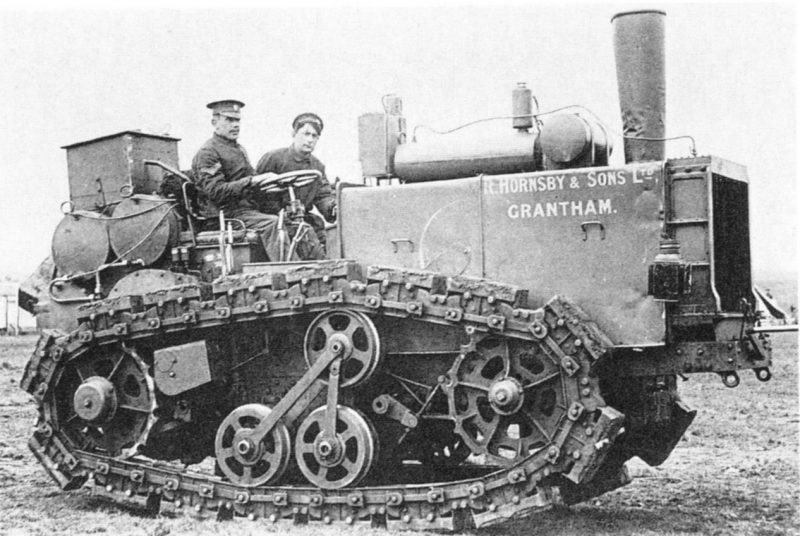In 1904 David Roberts, Managing director of the firm Richard Hornsby & Sons of Grantham, patented a new form of crawler track which was applied to various prototype vehicles. One of these was tested by the War Office in 1907 and in 1909 this machine was ordered from Hornsbys for military use.
It is said that the term Caterpillar was coined by soldiers who watched it moving along although the name was later adopted by an American company and is now world famous.
The tracks which Roberts designed are odd. For a start they have wooden blocks, where today we would use rubber pads, to avoid damaging the ground but they also ‘lockout’ at a certain point to create a smooth path for the wheels whereas modern tracks flex both ways to accommodate the ground. This gives the vehicle a strange rocking motion when it moves. Since the Home Office was very concerned about the risk of petrol and munitions all military vehicles built up to 1911 had to run on paraffin (kerosene). This explains the small petrol tank behind the exhaust chimney, for starting, and the big drums of paraffin at the back for running.
Steering is by braked differential, operated by a handwheel in front of the driver. There is also a winch drum on the near side drive sprocket shaft and in order to deploy this, undriven sprockets are also located at the front of the vehicle and these can be locked to prevent the vehicle moving when winching.
Despite the fact that it was still being used by the Army in 1914 the Little Caterpillar played virtually no part in the evolution of the tank. Having been used before the war as an artillery tractor it was ultimately preserved and is still in running order.
This tractor was one of four delivered to the War Office on 5th May 1910. It had a 60 hp six-cylinder engine, the other three, which were wheeled vehicles, had 50 hp four-cylinder engines. It was driven by road from Grantham to Aldershot in 1910 and then took part in extensive trials. It was converted to petrol fuel in 1911, raising the horsepower to 105.
A message from the Tank Museum:
“Please Support Us: As a charity, we rely on public support for all our activities. Our work is funded entirely by people like you. With your support, we can continue to create content. With the right support we might be able to do it more regularly – and can be even more ambitious. Please Click on the Banner Below”

